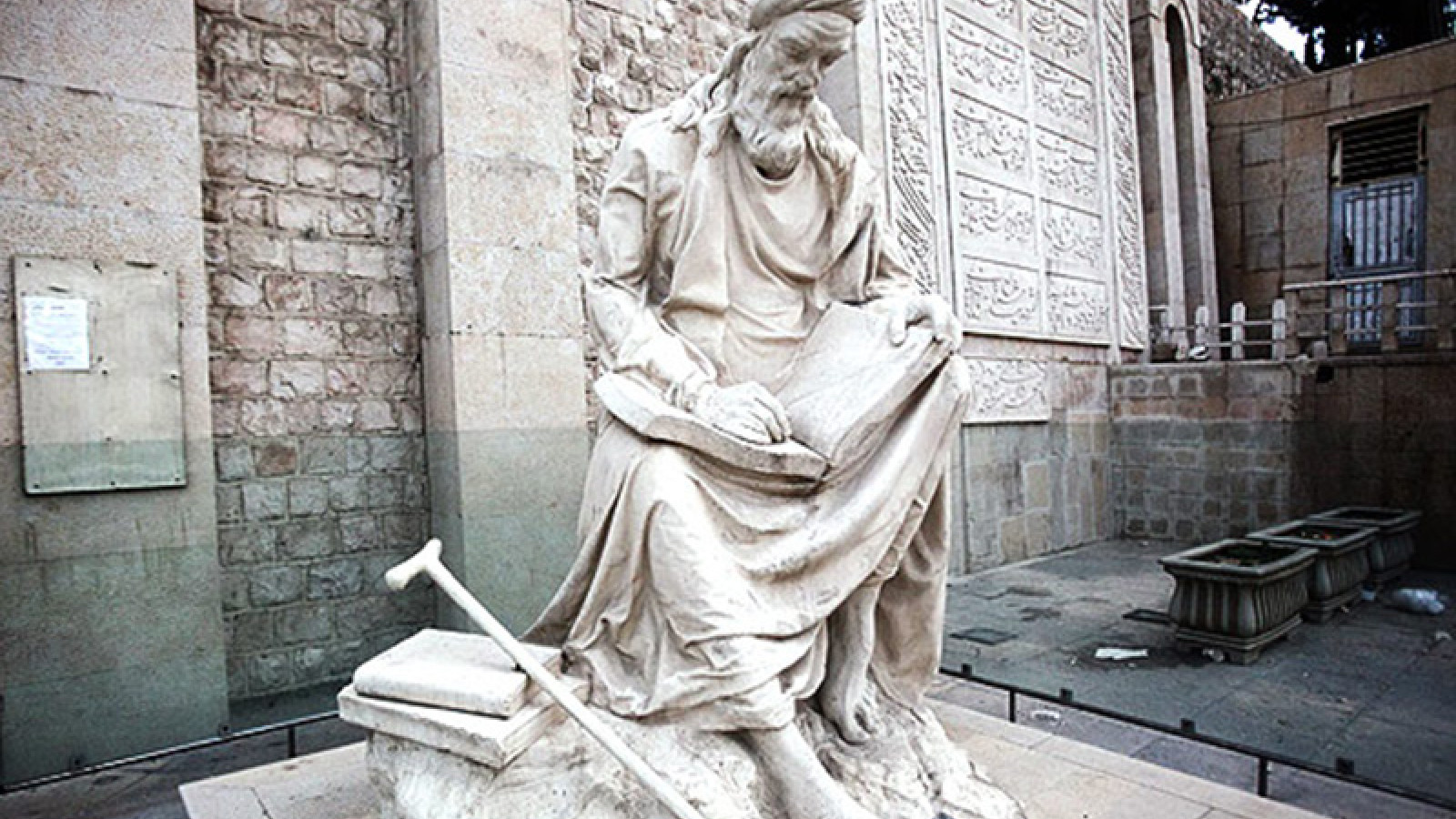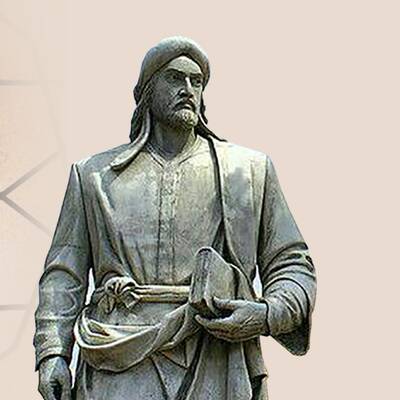
Abu’l-ʿAṭā Kamāl-al-Din Maḥmud b. ʿAli, known as Khwaju, was a famous Persian poet and Sufi mystic in 8th century AH. According to his Gol o Nowruz Masnavi, he was born in Dhu al-Hijjah 20th, 689 AH in one of the dominant families in Kerman. Like his contemporary scholars, he was aware of most sciences and mastered some of them like astrology.
After his childhood and adolescence, Khwaju traveled to many regions such as Hejaz, Levant, Jerusalem, Persian Iraq, Iraq, Egypt, Fars Province, and some ports in Persian Gulf. He wrote Mat̲h̲nawī of Homāy o Homāyun in Baghdad to offer it to Il-Khanid ruler Abu Saʿid, and his minister, Ghiyāth al-Dīn. But when he returned to Iran in 736 AH, sultan was dead. He wrote some poems in which he made jokes about Tabriz, and left to Fars province.
Amongst his contemporaries was Hafez, the most important poet as they always had a close relationship. Khwaju was older and more experienced than Hafez, so when he inhabited in Shiraz, Hafez was inspired by him. Consequently, we can find many verses in Hagez’s magnificent Diwan which are influenced by Khwaju poems or in some cases, Hafez’s poetry is adopted by him. There are lots of such examples in Hafez’s diwan, as Khwaju said: “what is the solution if we are notorious in the world because of wine / it is our fate from eternity”, and Hafez wrote: “we are going home through a spiritual journey / it is our fate from eternity”. Profiting literary ornaments, he is titled as Nakhlband (who create an Arecaceae) by his fellows. Some of the researchers believed Khwaju was a painter who designs carpets, because Mozaffar Heravi, one of the poets lived in the same era, called him the painter of Kerman. He was a prolific writer and he wrote almost 44000 verses including Diwan, a collection of his poems in the form of Ghazals, qasidas, strophic poems, qeṭʾas (occasional verse), and quatrains, Homāy o Homāyun (romantic mathnavi), Gol o Nowruz (a love story), Rowżat-al-anwār, Kamāl-nām (mystic poems), Gowhar-nāma, and Sām-nāma (a heroic epic).
Khwaju died in 750 AH and was buried in Allah-o- Akbar near Qur'an Gate, Shiraz.
